Edward Hopper’s New York
WHITNEY Museum
Oct 19, 2022–Mar 5, 2023
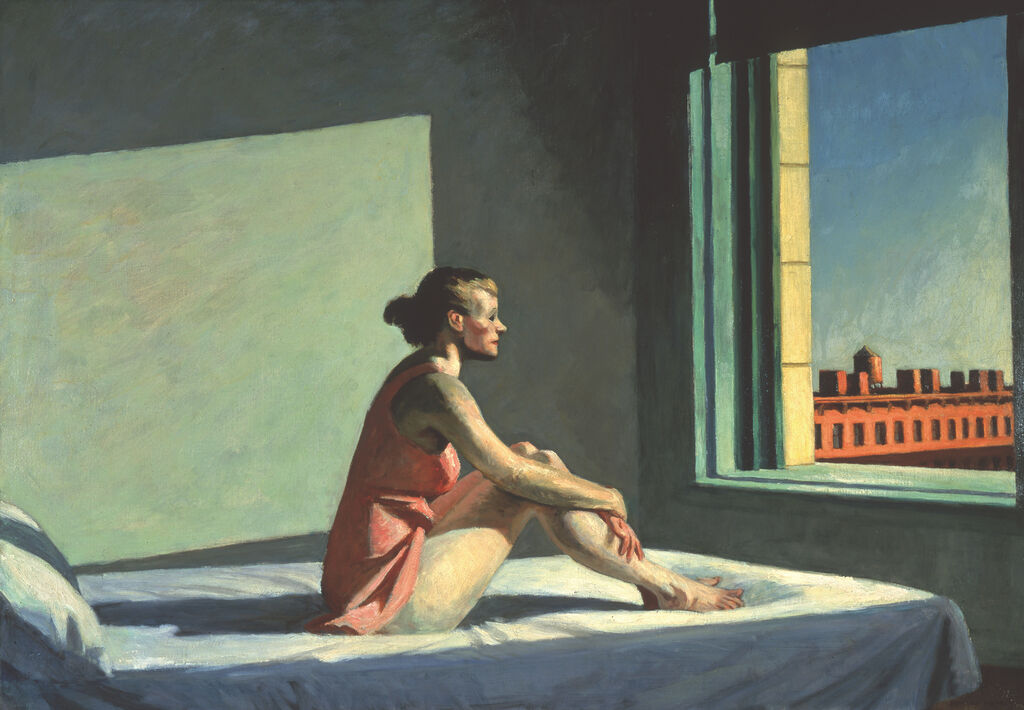 Edward Hopper was a keen observer of everyday life in New York,
Edward Hopper was a keen observer of everyday life in New York,
which he interpreted in works of art that are perceived
with an enigmatic sense of loneliness
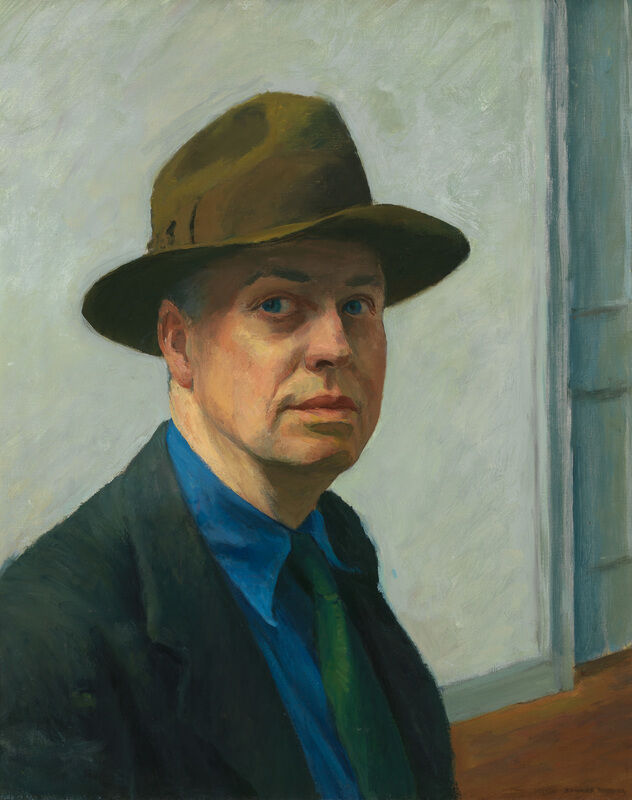
Hopper wanders around New York like a true voyeur without his intentions being discovered. With his painting, Hopper penetrated in an overwhelming way into the intimacy of people and things.
He freezes moments of people’s lives and portrays unusual spaces in New York, and thus reveals his other way of seeing the city he is in love with.
His paintings are the result of a deep introspection of the subject in order to extract what for him is essential: the psychological charge of the moment.
Self-Portrait, 1925–30
Oil on canvas
25 3/8 x 20 3/8 in. (64.5 x 51.8 cm)
Whitney Museum of American Art, New York;
Josephine N. Hopper Bequest 70.1165
HIGHLIGHTS
Sunlight in a Cafeteria, 1958
Oil on canvas, 40 3/16 x 60 1/8 in. (102.1 x 152.7 cm)
Yale University Art Gallery, New Haven, CT; bequest of Stephen Carlton Clark, B.A. 1903
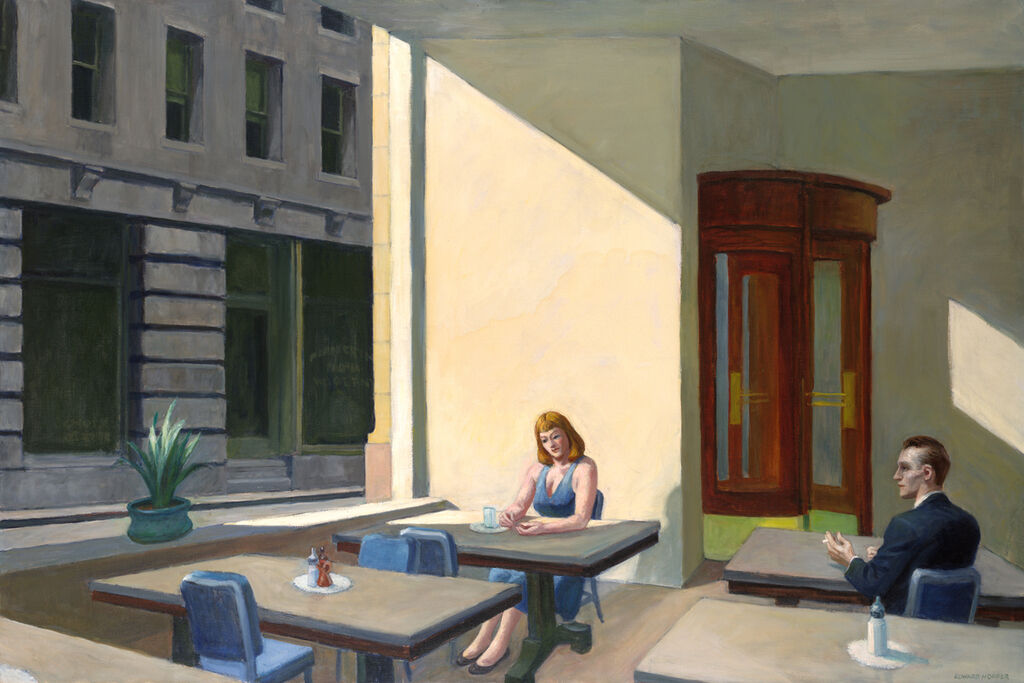
City Sunlight, 1954
Oil on canvas, 28 3/16 x 40 1/8 in. (71.6 x 101.9 cm)
Hirshhorn Museum and Sculpture Garden, Smithsonian Institution, Washington DC;
gift of the Joseph H. Hirshhorn Foundation, 1966
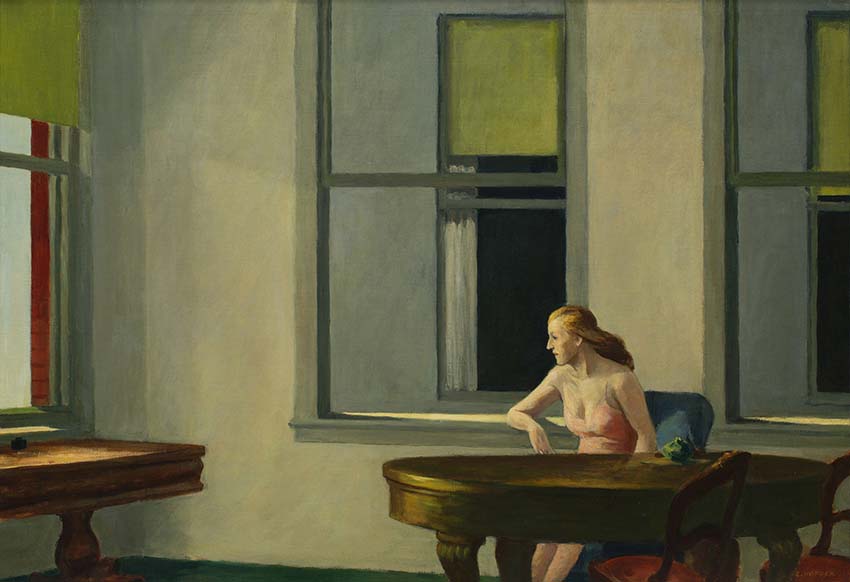
Automat, 1927
Oil on canvas, 28 1/8 x 35 in. (71.4 x 88.9 cm)
Des Moines Art Center, IA; purchased with funds from the Edmundson Art Foundation, Inc.
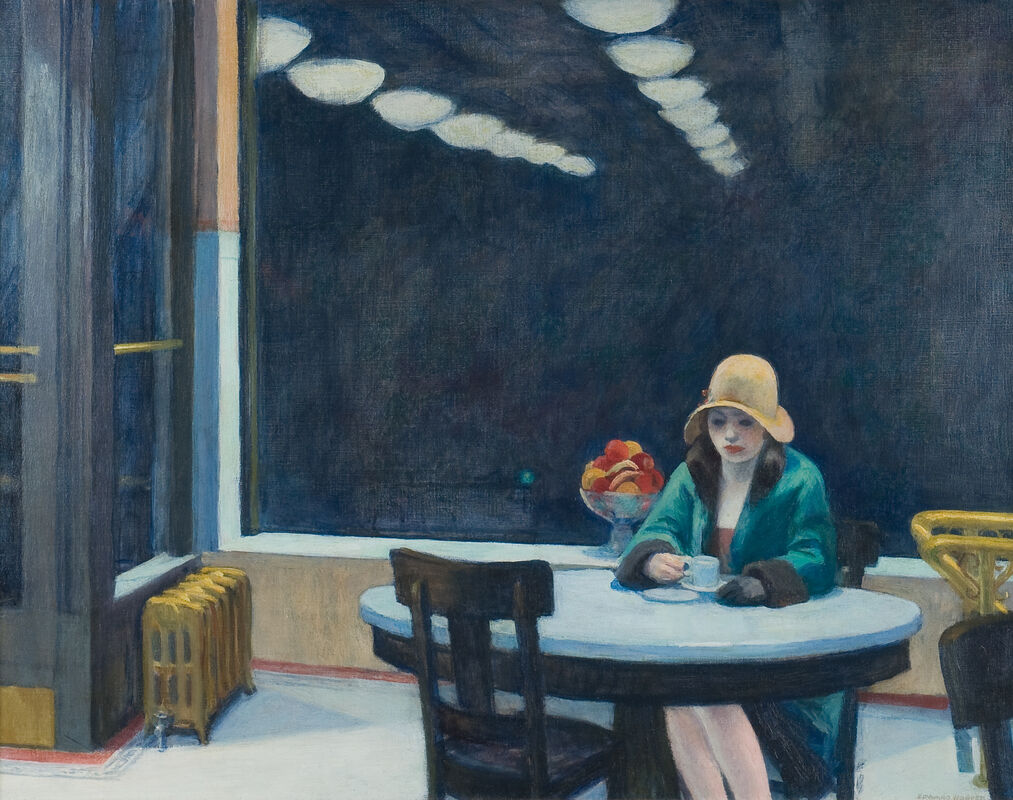
Office in a Small City, 1953
Oil on canvas, 28 x 40 in. (71.1 x 101.6 cm)
Metropolitan Museum of Art, New York; George A. Hearn Fund, 1953
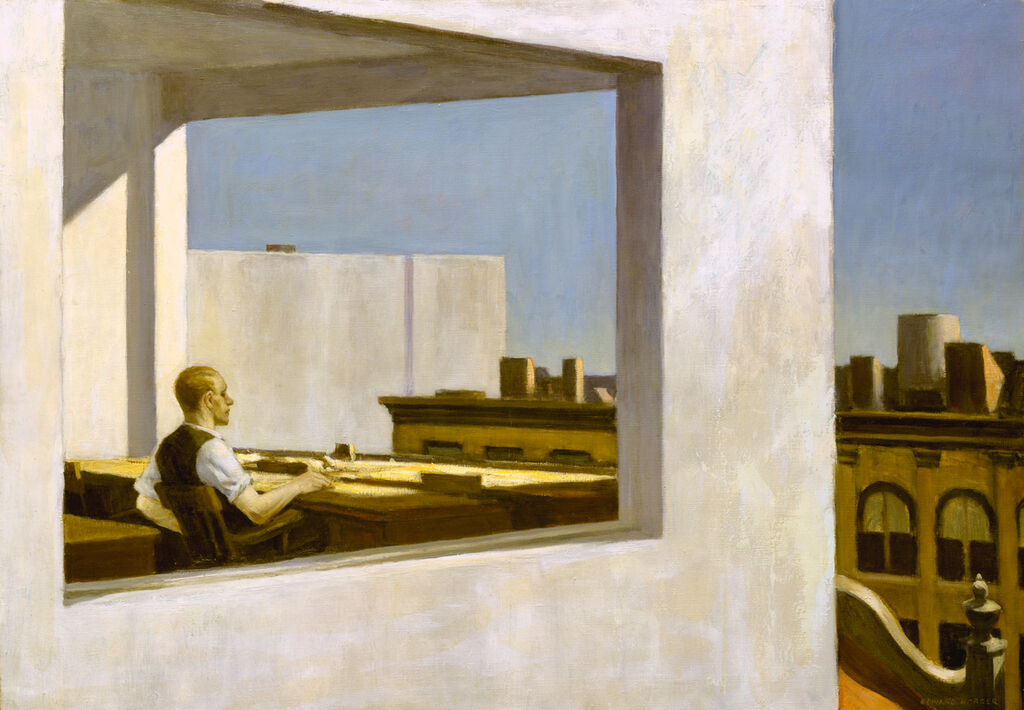
Office at Night, 1940
Oil on canvas, 22 3/16 x 25 1/8 in. (56.4 x 63.8 cm)
Walker Art Center, Minneapolis; gift of the T.B. Walker Foundation, Gilbert M. Walker Fund, 1948
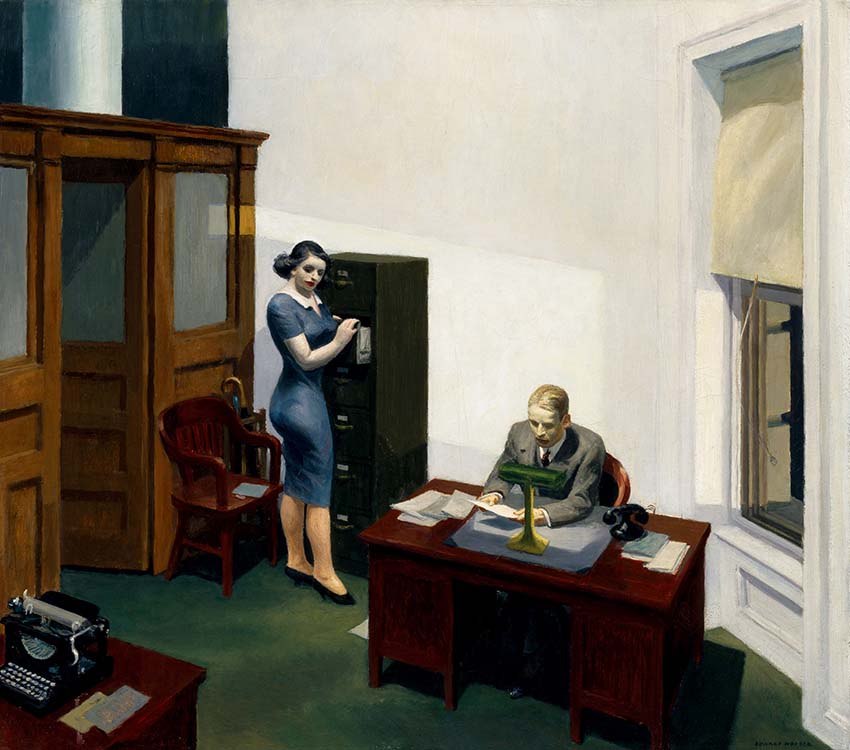
August in the City, 1945
Oil on canvas, 23 x 30 in. (58.4 x 76.2 cm)
Norton Museum of Art, West Palm Beach, Florida; bequest of R. H. Norton
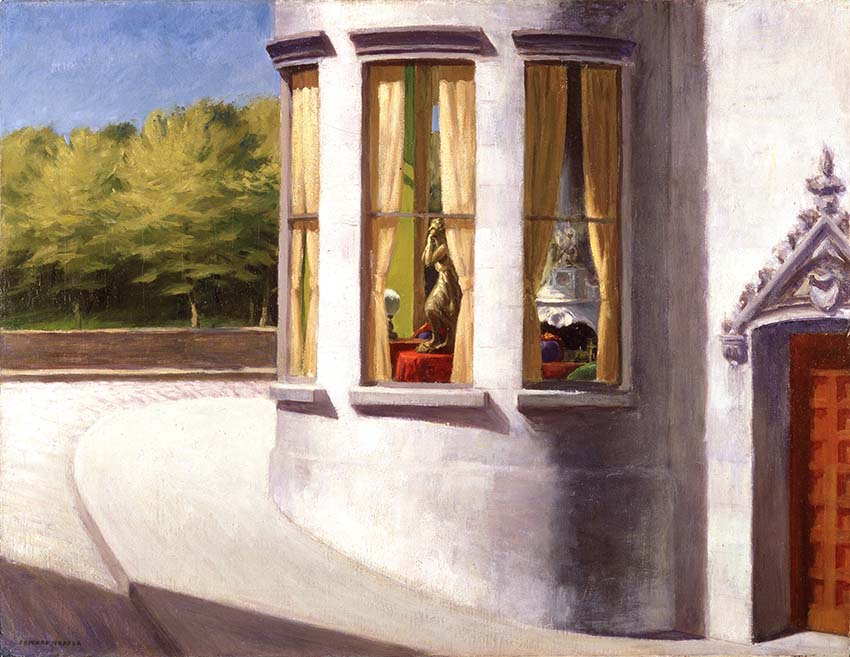
Room in New York, 1932
Oil on canvas, 29 x 36 in. (73.7 x 91.4 cm)
Sheldon Museum of Art, University of Nebraska–Lincoln; Anna R. and Frank M. Hall Charitable Trust
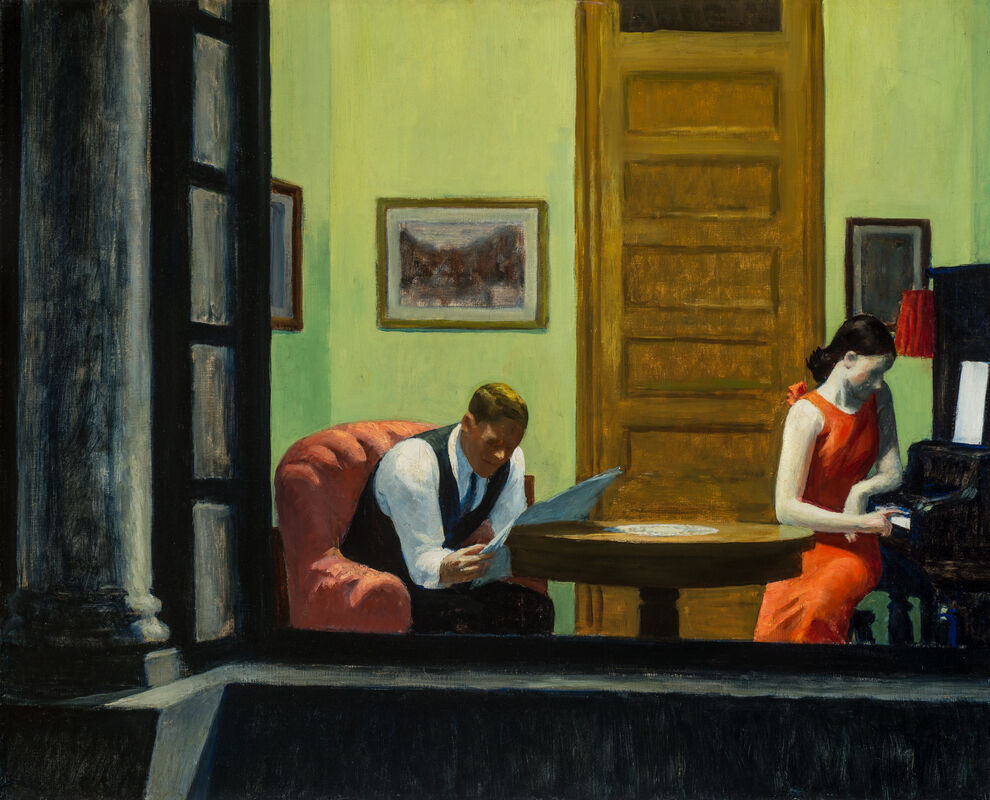
New York Interior, c. 1921
Oil on canvas, 24 5/16 x 29 3/8 in. (61.8 x 74.6 cm)
Whitney Museum of American Art, New York; Josephine N. Hopper Bequest 70.1200
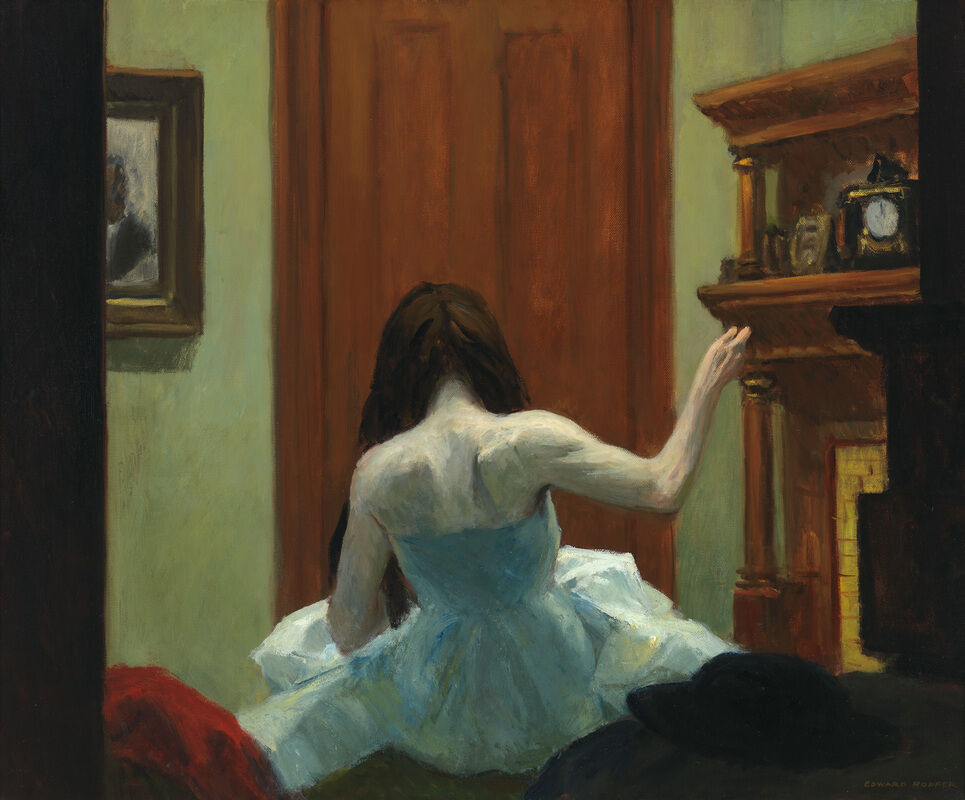
Room in Brooklyn, 1932
Oil on canvas, 29 1/8 x 34 in. (74 x 86.4 cm)
Museum of Fine Arts, Boston; The Hayden Collection—Charles Henry Hayden Fund
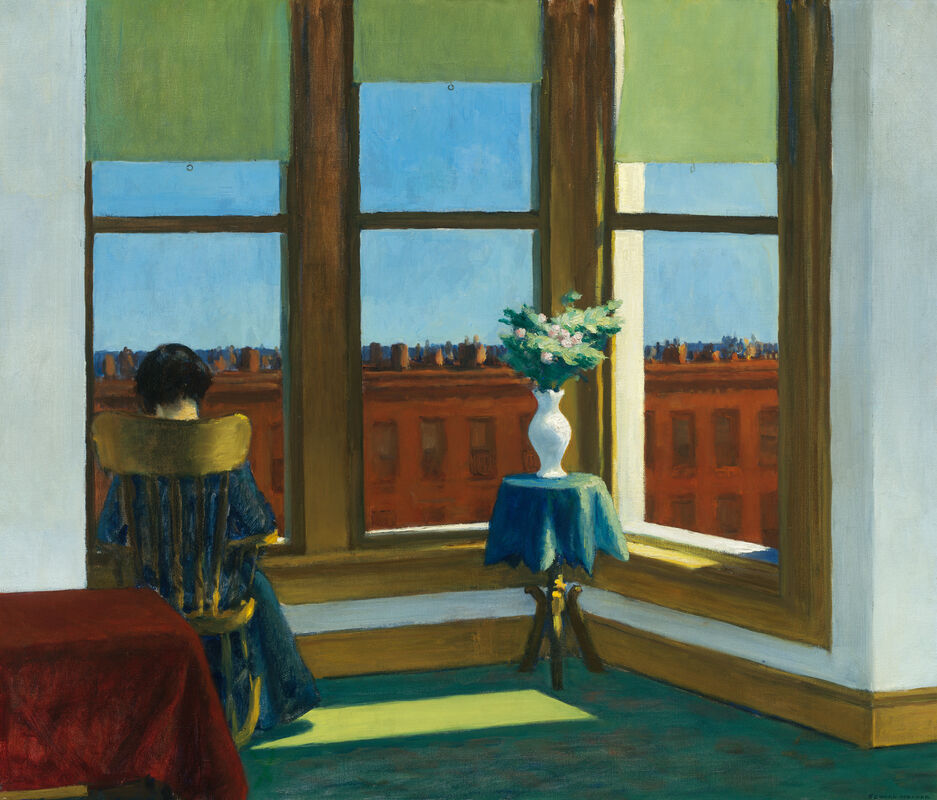
Sunlight on Brownstones, 1956
Oil on canvas, 0 3/8 x 40 1/4 in. (77.2 x 101.9 cm)
Wichita Art Museum, KS; Roland P. Murdock Collection
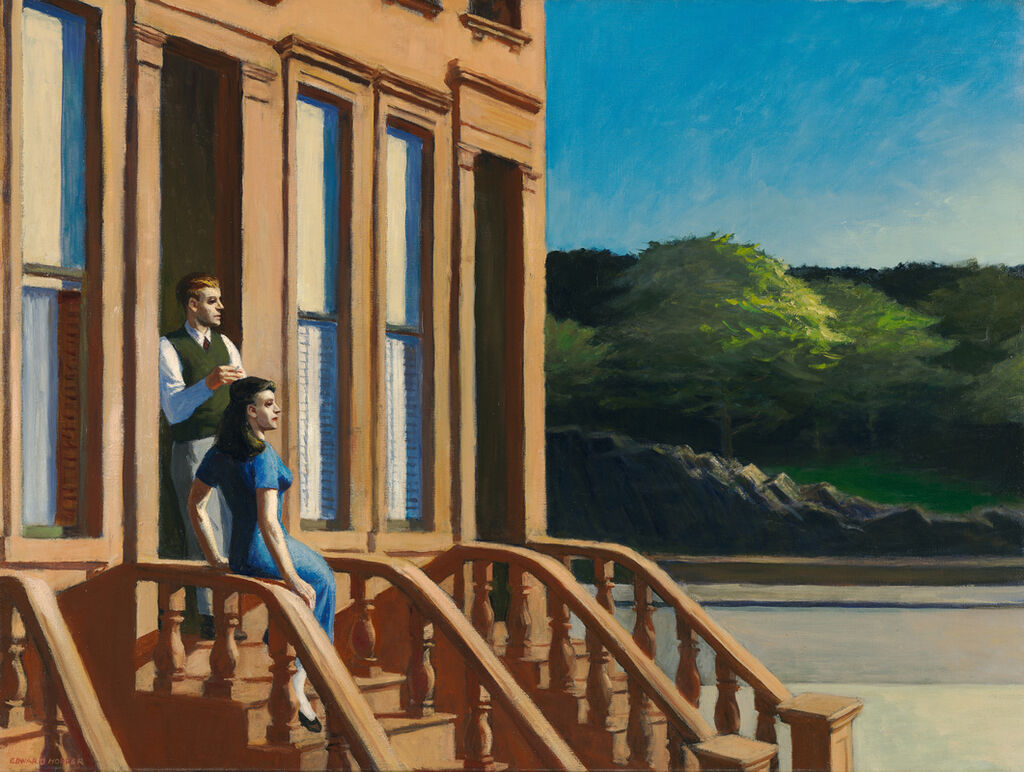
Morning Sun, 1952
Oil on canvas, 28 1/8 x 40 1/8 in. (71.4 cm x 101.9 cm)
Columbus Museum of Art, OH; museum purchase, Howald Fund

Tables for Ladies, 1930
Oil on canvas, 48 1/4 x 60 1/4 in. (122.6 x 153 cm)
Metropolitan Museum of Art, New York; George A. Hearn Fund, 1931

HOPPER’S NEW YORK
As giant skyscrapers grew dominating the city, Hopper ignored them and remained loyal
to the old spaces he held dear. Only buildings and modest corners of the city
have been immortalized by his palette
Early Sunday Morning, 1930
Oil on canvas, 35 3/16 x 60 1/4 in. (89.4 x 153 cm)
Whitney Museum of American Art, New York;
purchase, with funds from Gertrude Vanderbilt Whitney 31.426
This masterpiece Early Sunday Morning (1930), was acquired just a few months after it was finished, would become part of the Museum’s founding collection. The Seventh Avenue building on which the painting was based was a short walk from Hopper’s studio on Washington Square.
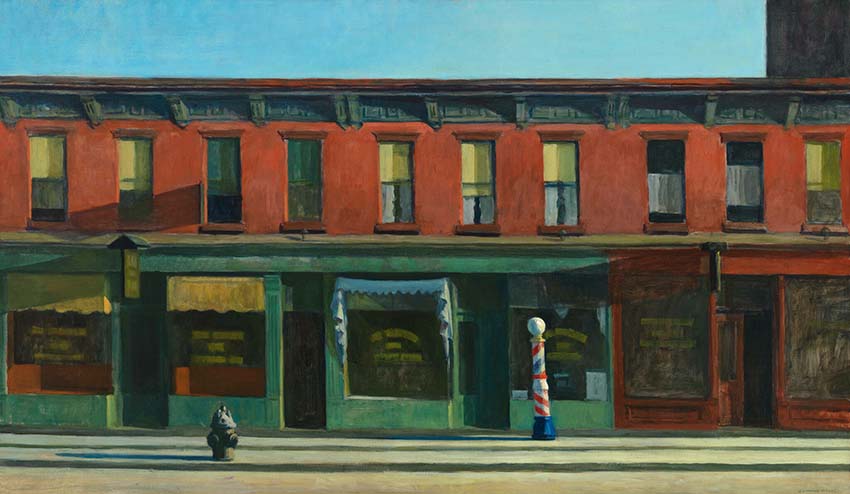
Drug Store, 1927
Oil on canvas, 29 x 40 1/8 in. (73.7 x 101.9 cm)
Museum of Fine Arts, Boston; bequest of John T. Spaulding
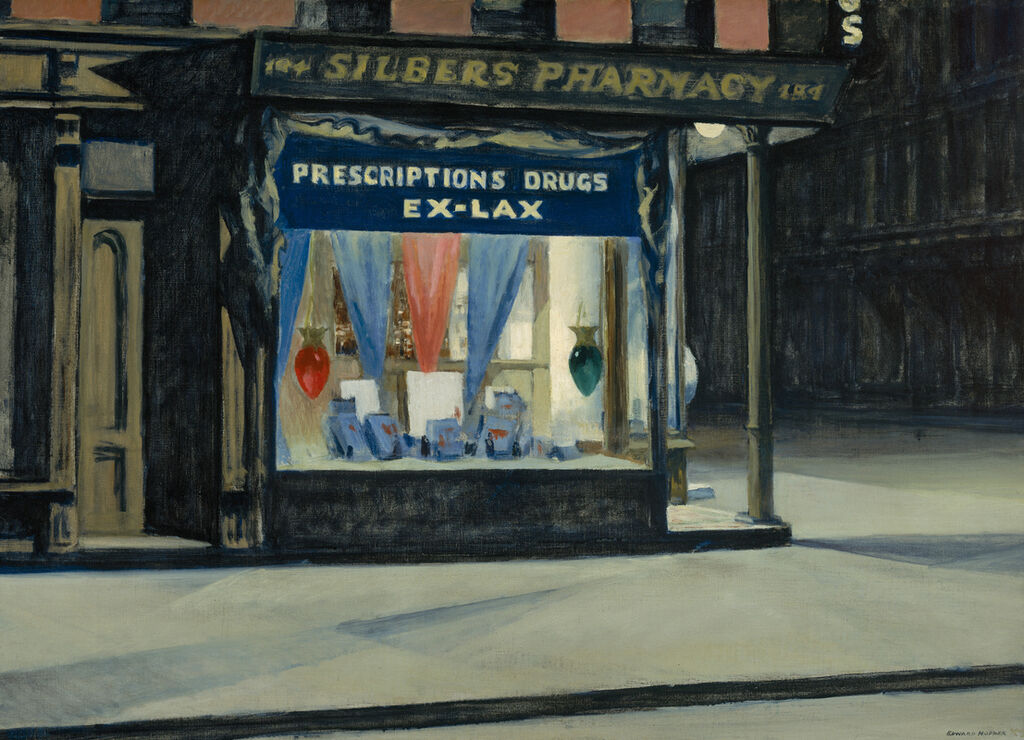
Queensborough Bridge, 1913
Oil on canvas, 25 7/8 x 38 1/8 in. (65.7 x 96.8 cm)
Whitney Museum of American Art, New York; Josephine N. Hopper Bequest 70.1184
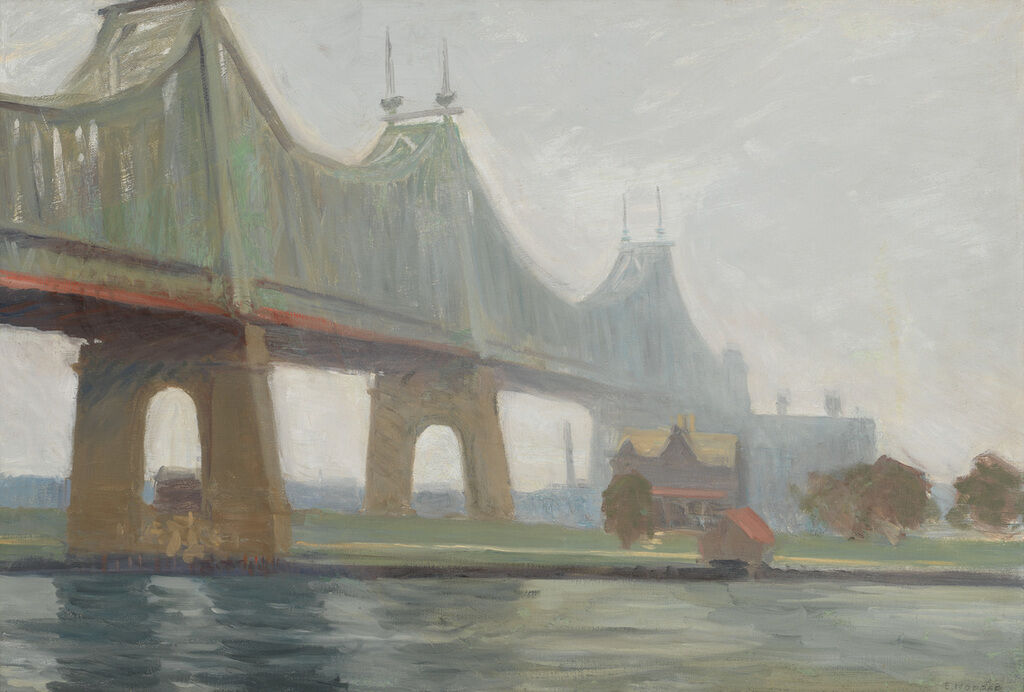
Manhattan Bridge, 1925–26
Watercolor and graphite pencil on paper, 13 15/16 x 19 15/16 in. (35.4 x 50.6 cm)
Whitney Museum of American Art, New York; Josephine N. Hopper Bequest 70.1098
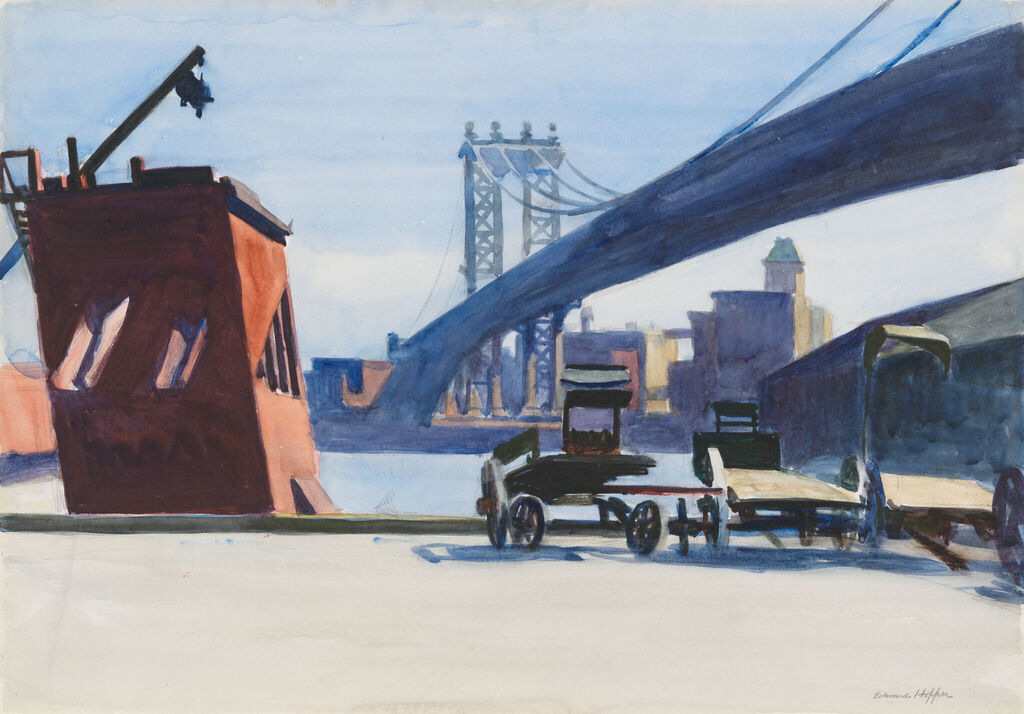
Tugboat with Black Smokestack, 1908
Oil on canvas, 20 3/8 x 29 5/16 in. (51.8 x 74.5 cm)
Whitney Museum of American Art, New York; Josephine N. Hopper Bequest 70.1192

Blackwell’s Island, 1928
Oil on canvas, 34 1/2 x 59 1/2 in. (87.6 x 151.1 cm)
Crystal Bridges Museum of American Art, Bentonville, AR
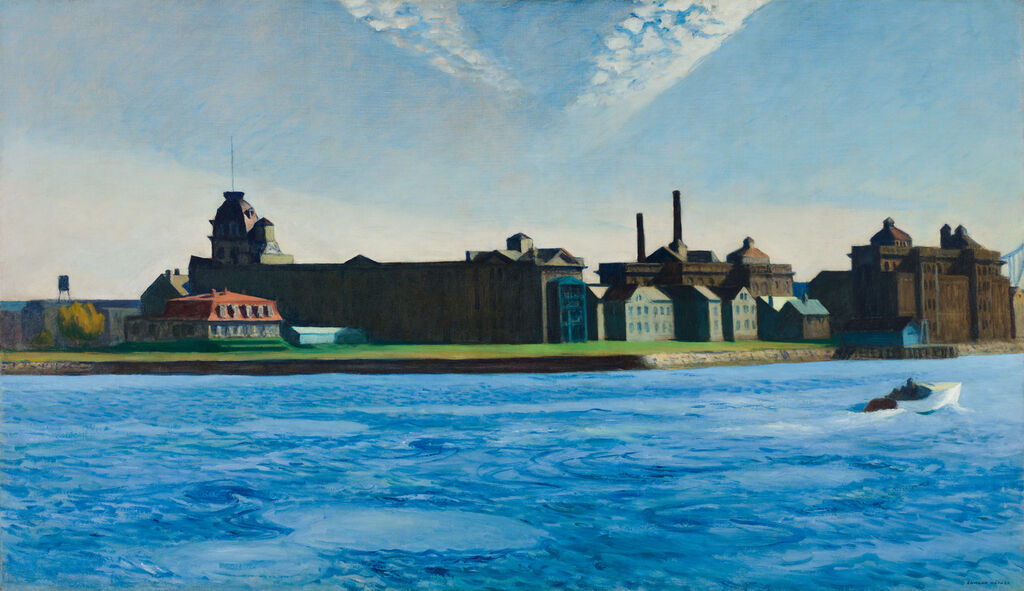
Blackwell’s Island, 1911
Oil on canvas, 24 3/8 x 29 5/16 in. (61.9 x 74.5 cm)
Whitney Museum of American Art, New York; Josephine N. Hopper Bequest 70.1188

Apartment Houses, East River, c. 1930
Oil on canvas, 35 1/16 x 60 1/8 in. (89.1 x 152.7 cm)
Whitney Museum of American Art, New York; Josephine N. Hopper Bequest 70.1211
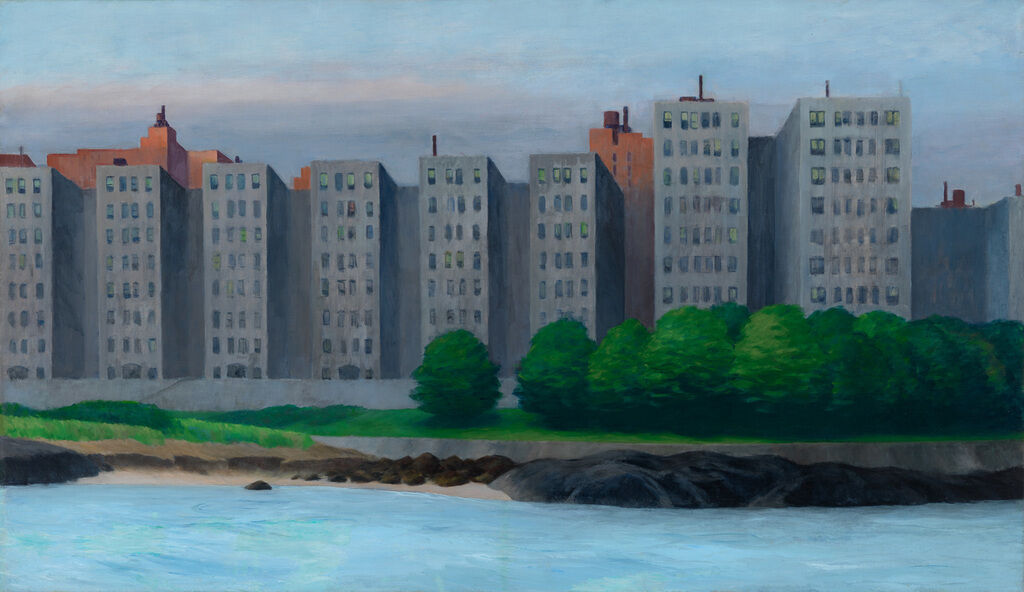
Roofs, Washington Square, 1926
Watercolor over charcoal on paper, 13 7/8 x 19 7/8 in. (35.2 x 50.5 cm)
Carnegie Museum of Art, Pittsburgh; Bequest of Mr. and Mrs. James H. Beal
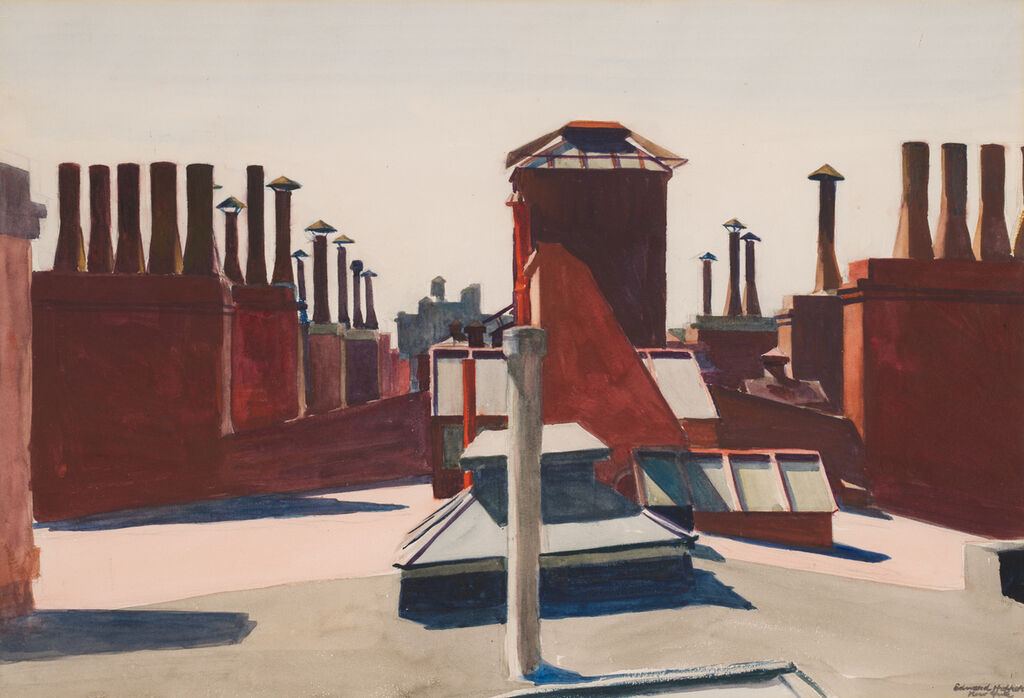
City Roofs, 1932
Oil on canvas, 35 11/16 × 28 11/16 in. (90.6 × 72.9 cm)
Whitney Museum of American Art, New York; bequest of Carol Franc Buck 2022.98
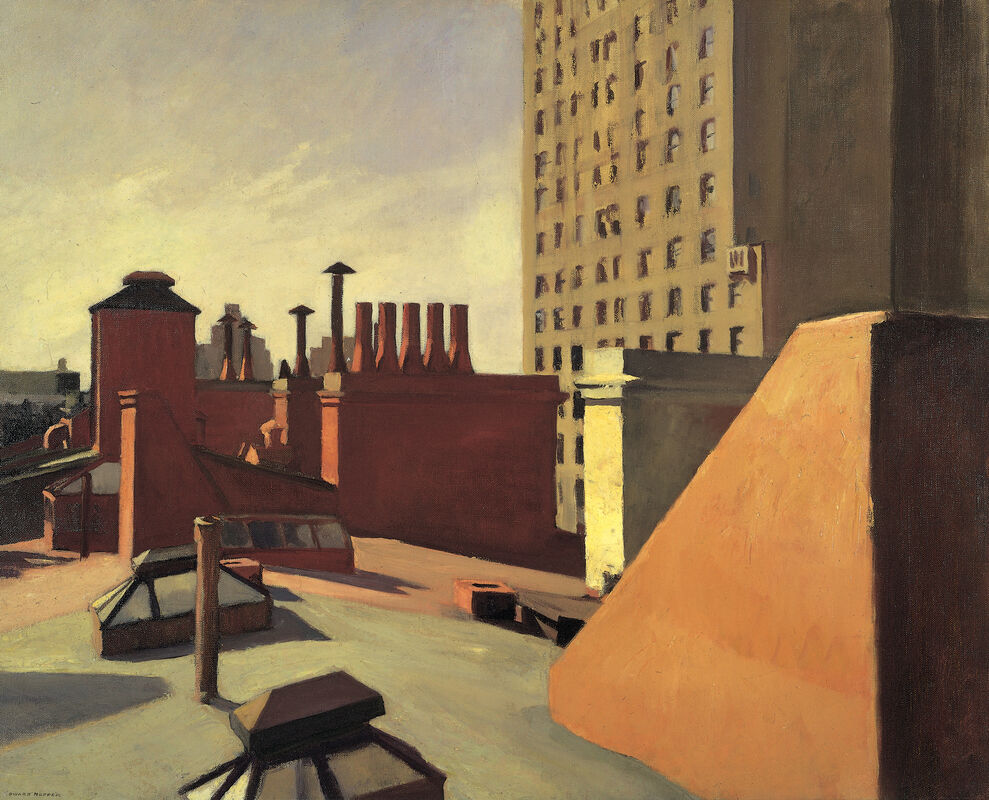
The El Station, 1908
Oil on canvas, 20 1/4 x 29 5/16 in. (51.4 x 74.5 cm)
Whitney Museum of American Art, New York; Josephine N. Hopper Bequest 70.1182
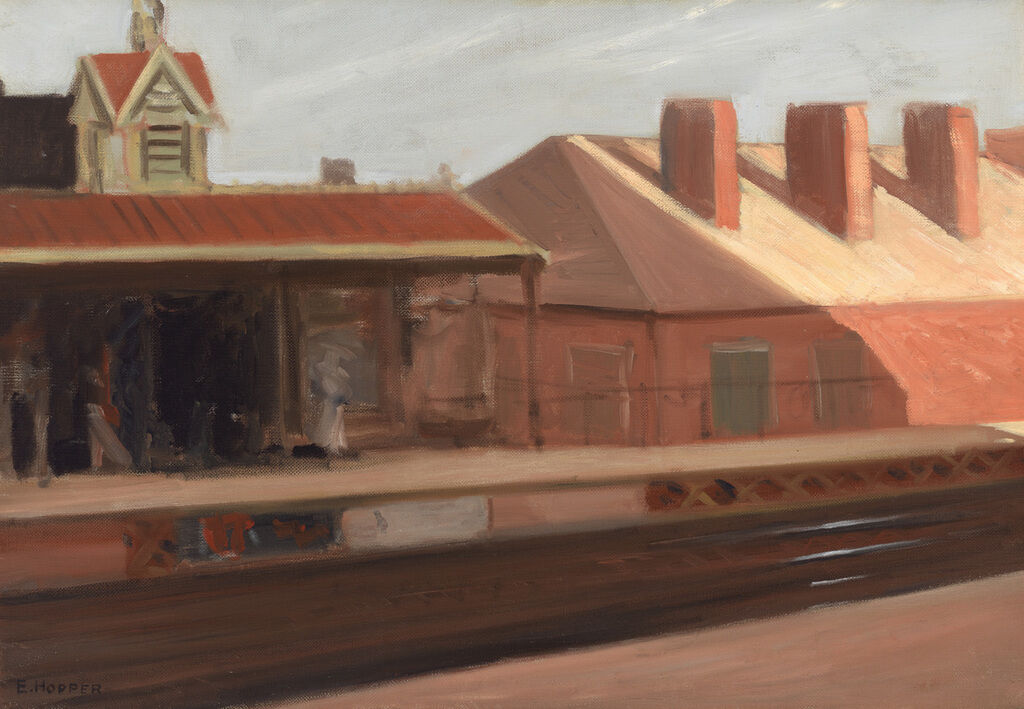
Approaching a City, 1946
Oil on canvas, 27 1/18 x 36 in. (68.9 x 91.4 cm)
The Phillips Collection, Washington, DC; acquired 1947
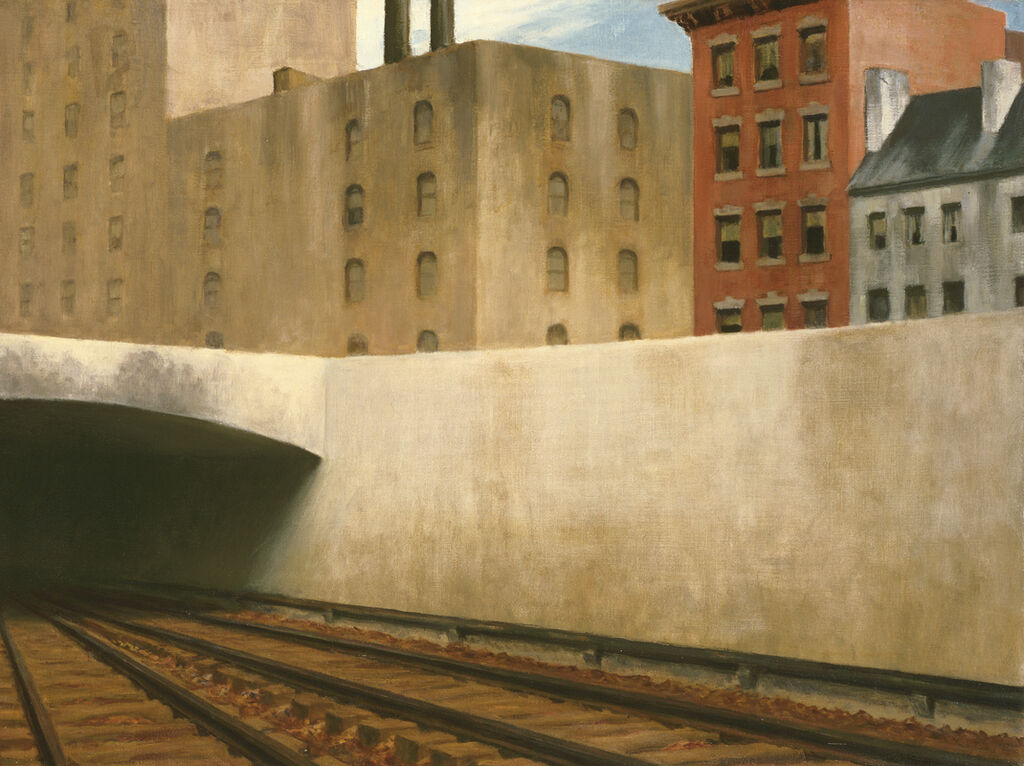
HOPPER AND THE THEATER
Hopper was passionate about the theater, and his work underscores the critical role it played as an active mode of spectatorship and a wellspring of visual inspiration. He and Jo frequented local establishments like the Sheridan Theatre, a nearby movie house, as well as the theaters clustered in Times Square’s growing entertainment district, as documented by the numerous ticket stubs they methodically annotated and kept.

The Sheridan Theatre, 1937
Oil on canvas, 17 x 25 in. (43.5 x 64.1 cm)
Newark Museum of Art, NJ; Felix Fuld Bequest Fund
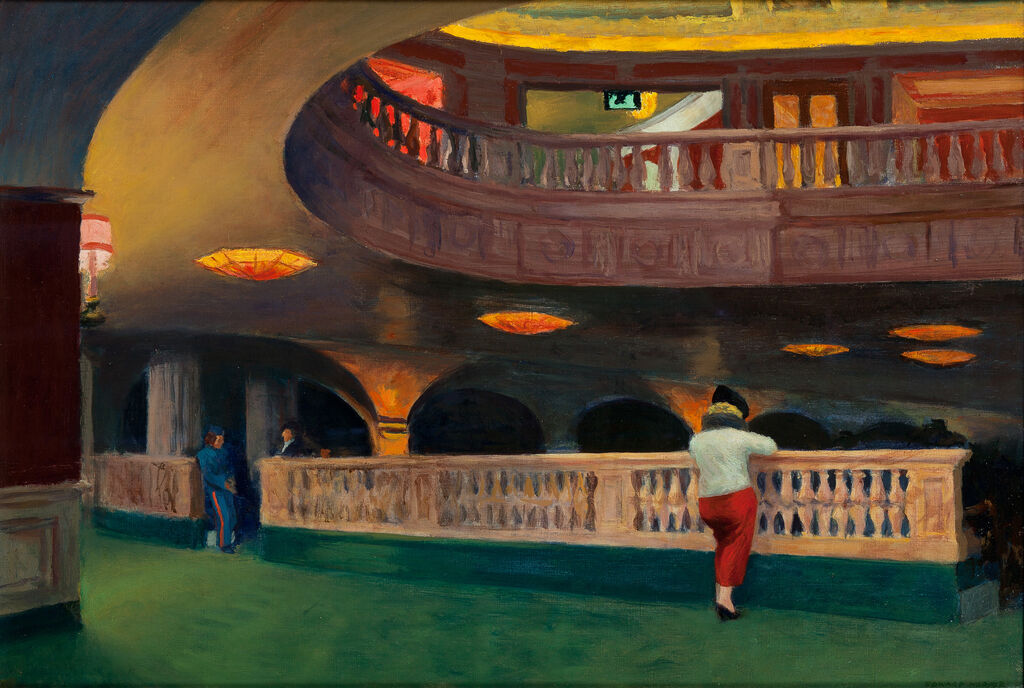
New York Movie, 1939
Oil on canvas, 32 1/4 x 40 1/8 in. (81.9 x 101.9 cm)
The Museum of Modern Art, New York; given anonymously
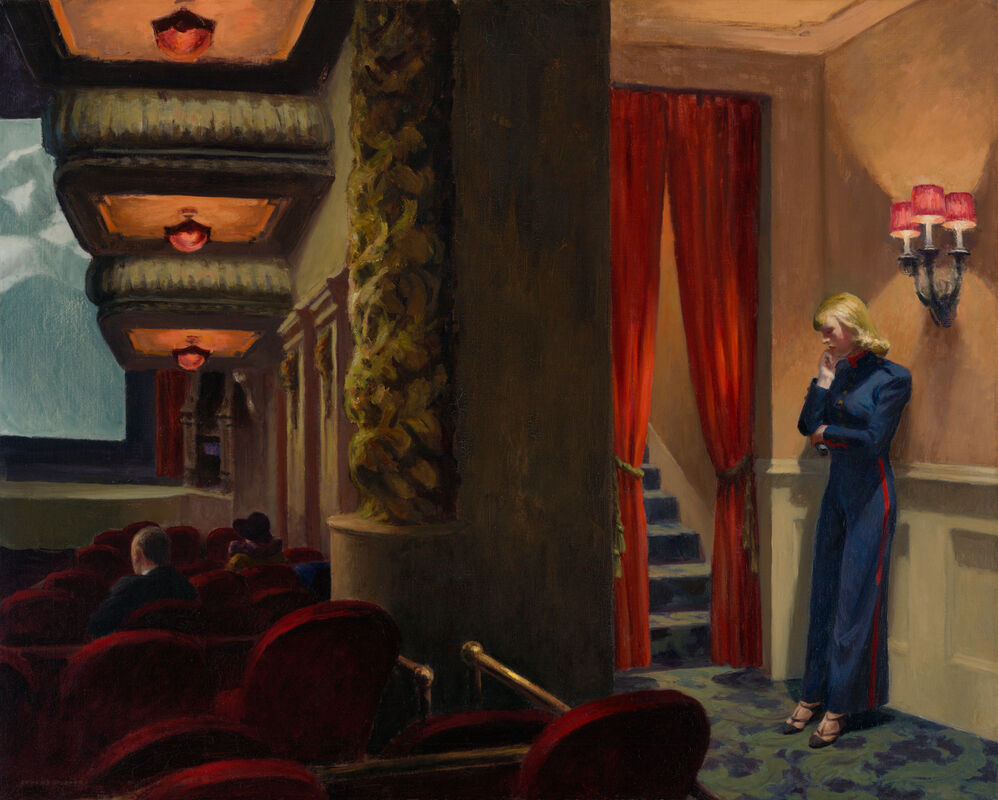
HOPPER IN BLACK AND WHITE
From 1915 to the early 1920s, he forged a rigorous printmaking practice,
consolidating many of his impressions of the city and sharpening his compositional
skills to experiment with light and shadow in black and white.
Night Shadows, 1921
Etching. Sheet: 12 x 15 15/16 in. (30.5 x 40.5 cm); plate: 6 7/8 x 8 1/4 in. (17.5 x 21 cm)
Whitney Museum of American Art, New York; Josephine N. Hopper Bequest 70.1047
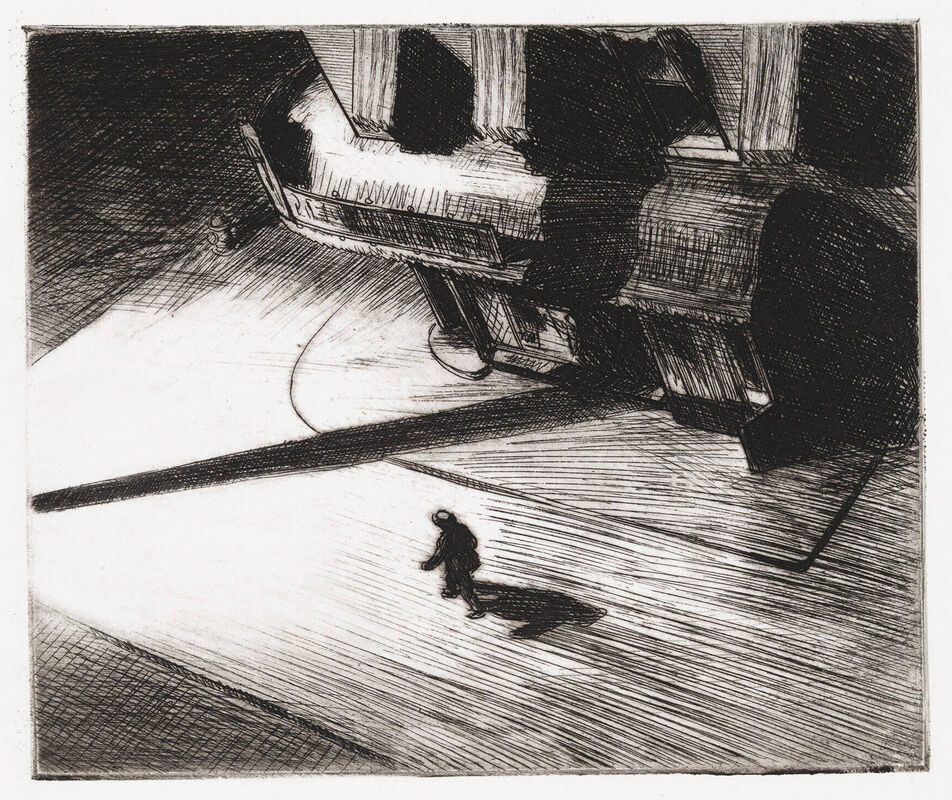
Study for Nighthawks, 1941
Fabricated chalk and charcoal on paper, Whitney Museum of American Art, New York;
purchase, Josephine N. Hopper Bequest, by exchange 2011.65
Hopper’s most acclaimed composition, Nighthawks (1942), also references his neighborhood,
not far from the Whitney’s present-day site in downtown Manhattan.
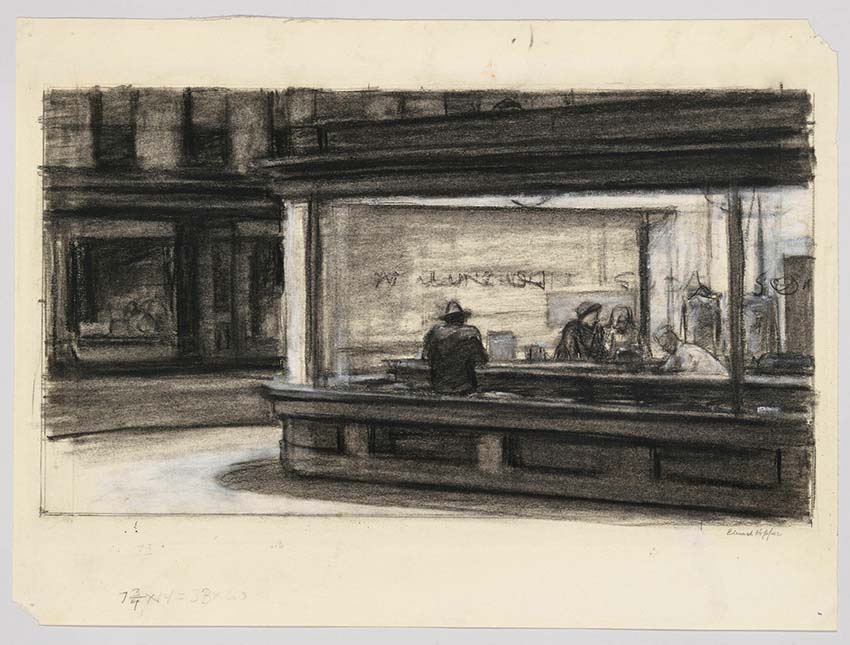
ABOUT EDWARD HOPPER and NEW YORK
“the American city that I know best and like most.”
A reflective and individualistic man, he was deeply attuned to the relationship of the self to the world, and his works increasingly focused on the psychological realities of his subjects. Hopper was frequently inspired by the two locations in which he spent most of his time: downtown New York, where he lived and worked in the same apartment on Washington Square from 1913 until his death in 1967; and Cape Cod, where, beginning in 1934, he maintained a second home and studio.
As a young artist in 1899, Hopper began commuting into the city from his hometown of Nyack—less than thirty miles north of Manhattan—to study at the New York School of Illustrating and then, one year later, at the New York School of Art. Afterward, he began pursuing freelance illustration work while continuing to paint. Funded by his commercial assignments, Hopper traveled to Paris for three extended visits between 1906 and 1910.
Several of Hopper’s preparatory studies for his paintings show his wife Josephine (Jo) Verstille Nivison, who played an active role as the sole model, often dressing in character and helping to procure props. The Hoppers’ collaboration in staging the scenes was part of Edward’s painting process.
CURATORS
This exhibition is organized by Kim Conaty,
Steven and Ann Ames Curator of Drawings and Prints,
with Melinda Lang, Senior Curatorial Assistant

CATALOGUE
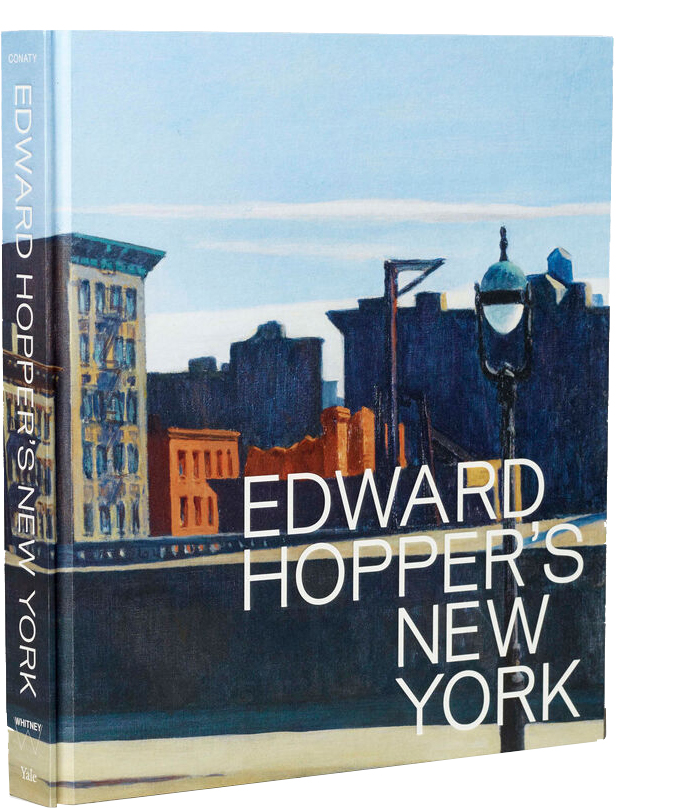
EDWARD HOPPER’S NEW YORK
$65 $52 Member Price
This engaging book delves into the iconic relationship between Edward Hopper (1882–1967) and New York City. This comprehensive look at an essential aspect of the revered American artist’s life reveals how Hopper’s experience of New York’s spaces, sensations, and architecture shaped his vision and served as a backdrop for his distillations of the urban experience.
During sidewalk strolls and elevated train rides, Hopper sketched the city’s many windowed facades. Exterior views gave way to interior lives, forging one of Hopper’s defining preoccupations: the convergence of public and private.
These permeable walls allowed Hopper to evoke the perplexing awareness of being alone in a crowd that is synonymous with modern urban life.
Drawing on the vast resources of the Whitney Museum of American Art, the largest repository of Hopper’s work, and the recently acquired gift of the Sanborn Hopper Archive, this book features more than 300 illustrations and fresh insight from authoritative and emerging scholars.
Edward Hopper’s New York is sponsored by
BANK OF AMERICA
This exhibition is also sponsored by
panella rolland
DELTA
PHILLIPS
Generous support is provided by Judy Hart Angelo, Kenneth C. Griffin, and the Terra Foundation for American Art.
Major support is provided by the Barbara Haskell American Fellows Legacy Fund; David Bolger; The Brown Foundation, Inc., of Houston; the David Geffen Foundation; and Laurie M. Tisch.
Significant support is provided by Elizabeth Marsteller Gordon.
Additional support is provided by Ann Ames, Jane Carroll, Elissa and Edgar Cullman, the Daniel W. Dietrich II Foundation, and Arlene and Robert Kogod.
TERRA
This exhibition is supported by an indemnity from the Federal Council on the Arts and the Humanities.
New York magazine is the exclusive media sponsor.
Whitney Museum of American Art
99 Gansevoort Street, New York, NY 10014, (212) 570-3600
https://whitney.org/